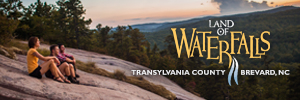USGS Topographic Quadrangle Maps
About the maps:
The United States Geological Survey publishes standardized topographic maps of the entire United States. The maps show contour lines (lines of equal elevation) which depict natural features of the land, as well as streams, some roads, trails, forest types, buildings, and other natural and man-made features. The 7 1/2 minute quadrangle maps are published at a scale of 1:24,000.
These maps have long been one of the best tools available for navigating the country's wild and urban terrain. With a good compromise between scale, detail, and artistic license, these maps set a minimum standard for what a recreation map should provide. With the advent of digital mapping, however, scanned "seamless" versions of these maps (called DRG's) became common as as a base layer for other map products, with more accurate or frequently updated data overlaid. (After an initial series of revisions to the maps, the USGS stopped updating the old paper versions).
The USGS has started making maps again, though, and these promise to be more up-to-date than their older counterparts. Called the "US Topo" series, these newer maps are drawn digitally, and include other layers - such as satellite imagery. However, even these are not without their issues. They're not as visually balanced, and delivery via PDF makes it difficult to integrate them with other tools.
How We Use Them
Scanned images of the USGS topographic quadrangles make up many of the base maps used on this site. They are freely available and in the public domain, making them a great option for this purpose. They are even available as an overlay for Google Maps, which we're using more extensively now. We don't currently integrate the newer US Topo series, but we will look at doing so once the product matures.
Important!
Keep these things in mind when viewing maps with the older USGS quads as a base layer:
These maps are technical in nature. You should be familiar with reading a topographic map and the symbols used on them in order to make the best and safest use of them. If you don't know the maps' and your own limitations, you can easily get yourself lost in the woods.
The maps are usually quite old, sometimes 20 and up to 40 years since the last editing. The USGS only updates maps frequently in areas where change is occurring rapidly (urban and developed areas). This means that what you see on the map isn't necessarily what you will find on the ground. Many trails, roads, buildings, clearcuts, etc. that are shown will have long since faded, and many that exist on the land may have come about long after the map was made. Maps drawn for this site, Google map base layers, and most other commercial map products will have updated trail information drawn on top of the USGS map base. Learn how to distinguish between the overlay and the base map.
Newer map products may be a better choice, such as Pisgah Map Company's WNC Trail Guide series, Nataional Geographic Trails Illustrated series maps, and the US Forest Service, NC Forest Service, and various city/county and private publications. See the main maps page for more information on these other maps.


